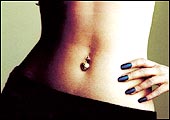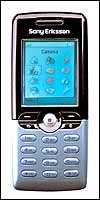|
|
|
Mumbai's Athena: The popular hotspot
plans to reinvent itself by February next year
|
The
half-life of a pub in Bangalore is just around three months. Some
time back, Urban Edge was the pub of choice. For a brief while it
was The Park's i-Bar, then Opium, and now Spin. 180 Proof? What's
that? The risk in writing about Bangalore's pubs is that the dive
picked as the prevailing hotspot may well be oh-so-five-minutes
ago by the time the article comes out. Attribute that to the predominantly
younger-than-young crowds that frequent pubs (yes, this writer is
aware that coffee, not draught beer, is the preferred drink of several
techies).
Mumbai's nightspots do better. Velocity is
18 months old, Athena, 35 and neither is showing signs of ageing.
That, says Wasim Khan of Velocity, is because the average age of
a nightclub in Mumbai is three years. "But in three years,
you are absolutely dead," he says. "And even during the
period, you constantly need to change and reinvent yourself to keep
the crowds coming." That could range from thematic parties
that change every five to eight weeks (Bollywood Night in Velocity
and Fashion Fridays in Athena are currently the rage). Vikrant Choughule
of Indage Chateau, the winemaker behind Athena echoes Khan's point
of view. "As clubs keep coming and going, you have to give
the customer something different, if not reinvent completely."
That could explain why Athena is going in for
a completely new look that will be unveiled in February 2004. Mumbai's
obsession with its old-favourites hasn't come at the cost of new
dives. The promising ones are Hawaiian Shack (think retro music
and faux Hawaiian waitresses), Rain (think Bollywood types), Circus
Circus (think a new circus act every night), Brew Bar (think 22
brands of beer), Red Light (think slick bartending) and Provogue
Lounge and Lush. And everyone is looking forward to the imminent
launch (it may have happened by the time you read this) of Indage's
new nightclub Zaha. Will all these places be around in 2006? Your
guess is as good as ours.
-Dipayan Baishya
WHERE IS
FASHION MADE IN INDIA?
 Tokyo's
streetwear may well be the inspiration for European designers, but
the fount of fashion in India is the desert state of Rajasthan.
Not convinced? Listen to the hottest designer around, Kolkata's
Sabyasachi Mukherjee, then. "Rajasthan is the place where fashion
starts in India. The people there are not fashionable, but they
wear bright clothes to break the monotony of the desert." Adds
Kodaya (Karnataka)-based designer Aarti Monappa, "Bangalore
and Mumbai have style, Delhi has glamour, but Rajasthan is definitely
most designers' inspiration when it comes to traditional designs." Tokyo's
streetwear may well be the inspiration for European designers, but
the fount of fashion in India is the desert state of Rajasthan.
Not convinced? Listen to the hottest designer around, Kolkata's
Sabyasachi Mukherjee, then. "Rajasthan is the place where fashion
starts in India. The people there are not fashionable, but they
wear bright clothes to break the monotony of the desert." Adds
Kodaya (Karnataka)-based designer Aarti Monappa, "Bangalore
and Mumbai have style, Delhi has glamour, but Rajasthan is definitely
most designers' inspiration when it comes to traditional designs."
And you thought sand-washed denim was the desert's
only contribution to fashion.
-Ananya Roy
TEST DRIVE
T610: No It Isn't Arnie Redux
 Advertising
works, believe you me. There I was, suffering from acute thumb fatigue,
taking in the tube's evening shows when the ad for the Sony Ericsson
T610 came on. It was cool. It was edgy. It was funky. So was the
phone when I finally managed to lay hands on one for a test drive.
The T610 (the first phone jointly developed by Sony and Ericsson)
is one sexy beast. Advertising
works, believe you me. There I was, suffering from acute thumb fatigue,
taking in the tube's evening shows when the ad for the Sony Ericsson
T610 came on. It was cool. It was edgy. It was funky. So was the
phone when I finally managed to lay hands on one for a test drive.
The T610 (the first phone jointly developed by Sony and Ericsson)
is one sexy beast.
Now for the phone. The T610's anodised aluminium
body gives it the class moulded plastic phones can only dream of.
The camera is recessed and less prone to scratches. The keypad takes
some getting used to, but I simply loved the five-way joystick (force-feedback
while gaming, no less), and the large (128 x 160 pixels) screen.
Great design, yes, but the T610's usability was something else.
Actually, its user-interface wasn't all that
bad, but it wasn't Nokia-like. I'm on my fourth Nokia phone and
can vouch for the almost-intuitive interface the company's phones
sport (save the 3650; to operate that you either need a degree in
engineering or have to be five years old). Can I say the same thing
about the T610's interface? No, but maybe, with time, I could get
used to it. I didn't really get around to using the ringtone editing
function (much like a DJ, I could have created by own midi ringtones
of almost any piece of music), but it seemed a nifty add-on.
The T610's camera is as good as those on other
phones. It boasts the same resolution as the camera on Nokia's 7250
(288 x 352 pixels). And Quickshare does make it easy to send pictures
(as the ads claim it does). My problem with the T610 has to do with
its primary function. It looks good, sports a great camera, and
impresses potential-dates, but hey, what's the use of all that if
you can't really hear what's being said on the phone. I put the
problem down to the specimen I had been sent but one fellow-sufferer
I unearthed had lots to say about the voice-quality. "Use the
hands-free," he advised. "It makes things better."
That it did.
Would I pay Rs 18,999 for this phone? The look,
the feel, and the camera are clear turn-ons, but-call me conservative-I
believe phones are primarily meant for talking. That should give
you an idea of my answer.
-Kushan Mitra
CEO CELLPHONE QUIRKS
 Most
Indian CEOs seem to prefer 'private numbers' (the number doesn't
show up when they call), one CEO we know has given out his number
only to his family and his secretary (if you have to speak to him,
call his office; his secretary calls him and if he wants to speak
to you, he calls back), and another who is very free with his number
actually switches on his phone only when he wishes to make a call. Most
Indian CEOs seem to prefer 'private numbers' (the number doesn't
show up when they call), one CEO we know has given out his number
only to his family and his secretary (if you have to speak to him,
call his office; his secretary calls him and if he wants to speak
to you, he calls back), and another who is very free with his number
actually switches on his phone only when he wishes to make a call.
HEALTH
NOTES
That Triglyceride Thing
|
|
|
BREAD: Takes the cake in terms of starch-content
|
|
|
| ROOMALI ROTI: Low on roughage,
high on starch |
|
|
| RICE: Lowest on the threat index |
Let's sock it to
you: the major cause of coronary artery diseases (cads) in Asians
isn't a fat-rich diet, as one would expect it to be, but a condition
termed hypertriglyceridemia. Triglycerides are the chemical form
in which most fats reside in the human body. They're present in
blood plasma and in association with cholesterol form plasma lipids
(bad news). Science tells us that the triglycerides in plasma come
from fats; now, new research has revealed that in the case of Asians,
they are made in the body itself, from carbohydrates.
This could well be the missing link. Conventional
risk variables do not explain the high incidence of cads among Indians.
"We are so used to carbohydrate-rich diet," says Rekha
Sharma, the Chief Dietician at Delhi's All India Institute of Medical
Sciences (AIIMS), "that we do not even think of attributing
our high Body Mass Index (BMI) to it". "A low fat-intake
doesn't automatically translate into good health". Carbohydrates,
you see, can do as much damage as fats. There may be other factors-an
errant gene, for instance-that predispose Indians to cads, but there's
no denying the fact that our carbohydrate-rich (think rice, chappatis,
rotis) doesn't help.
The triglyceride thing also sheds light on
that enduring Indian mystery of how Indians, especially those from
the southern part of the country, who live on a moderate-fat vegetarian
diet, manage to reach weights one would normally associate with
steak-eating occidentals. Does this mean the Atkins diet-created
by the late Dr. Robert C. Atkins who believed that if the body were
starved of carbohydrates, it would start burning fats for energy-is
just the thing for triglyceride-ridden Indians? There's no research
to buttress this opinion, but the answer to that question may well
be yes. Several Indians who have moved to a variant of the Atkins
diet- variant, because even Indians who are non-vegetarians do not
eat the same quantum of red meat as Americans-speak highly of it.
This writer hasn't really come across a working
version of a vegetarian Atkins diet, but is reasonably sure that
any halfway-decent dietician should be able to draw up one. Remember,
too much of anything, even carbs, is bad, bad, bad.
-Ananya Roy
HEALTH
SNIPPETS
 SATED
ON SOY SATED
ON SOY
According to a recent issue of The Journal of Nutrition, Cholecystokinin
(CCK), a substance produced by endocrine cells "suppresses
food intake by inducing a feeling of satiety". Soy, apparently,
accelerates the release of CCK. That's another reason to gorge on
Chinese food.
 POISON
PILL POISON
PILL
Were you aware that botox (short for botulinum toxin), the wonder
cure for wrinkles, is derived from the same bacterium that causes
a form of food poisoning? And that the wrinkle-removing and life-threatening
properties, both stem from the bacterium's ability to cause muscle
paralysis?
|
